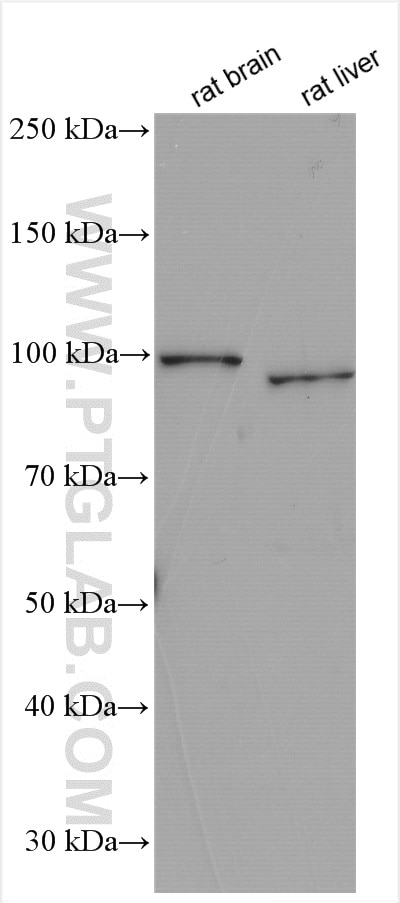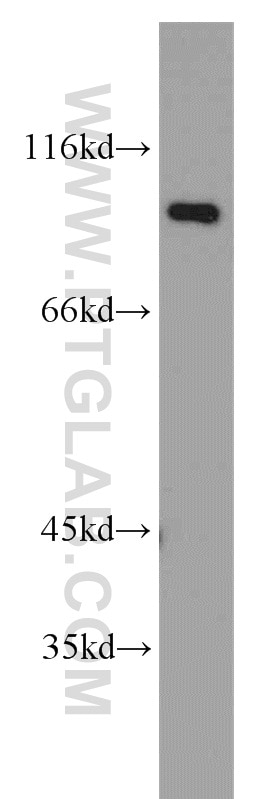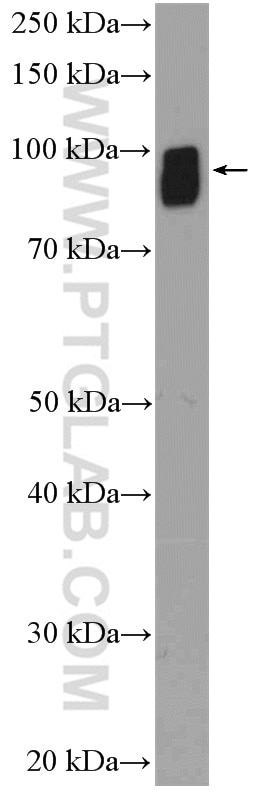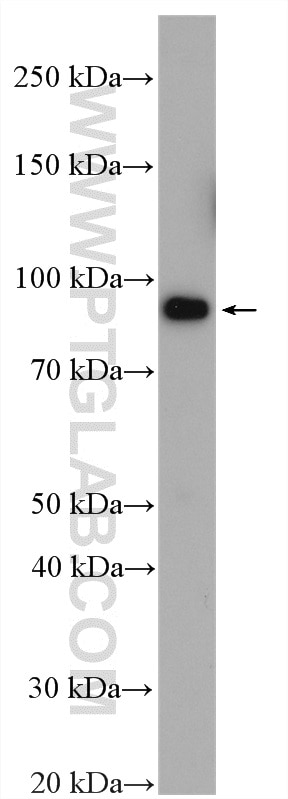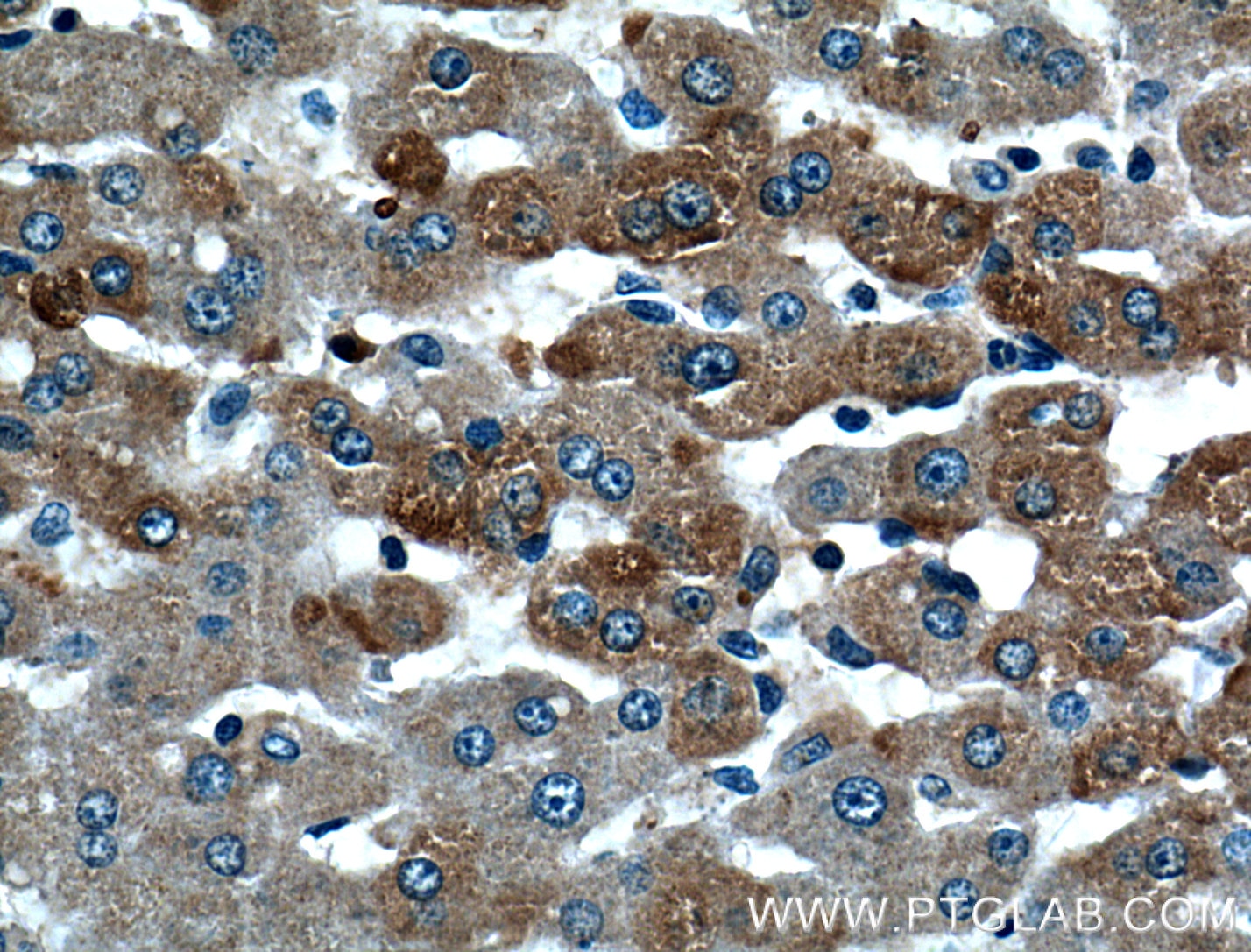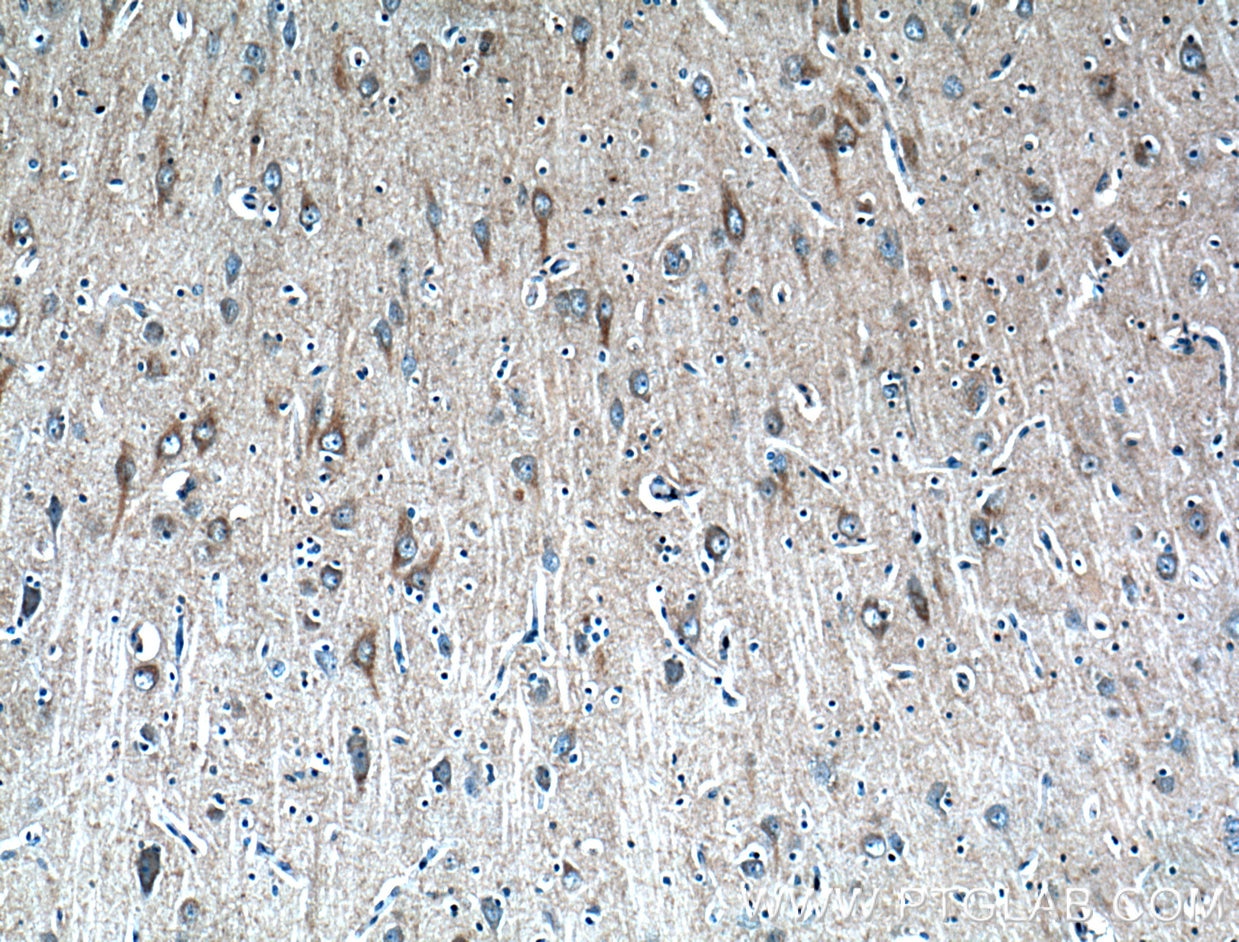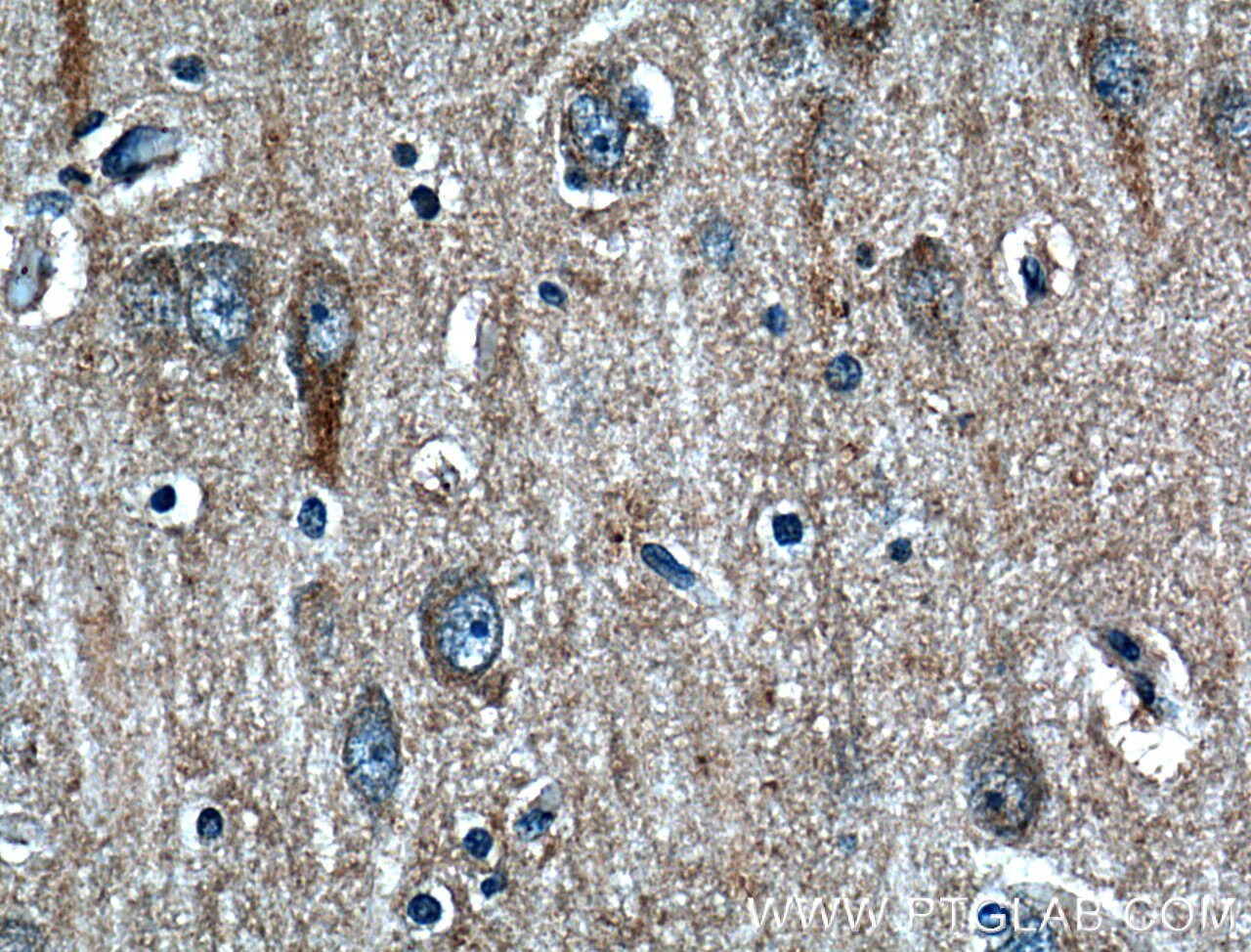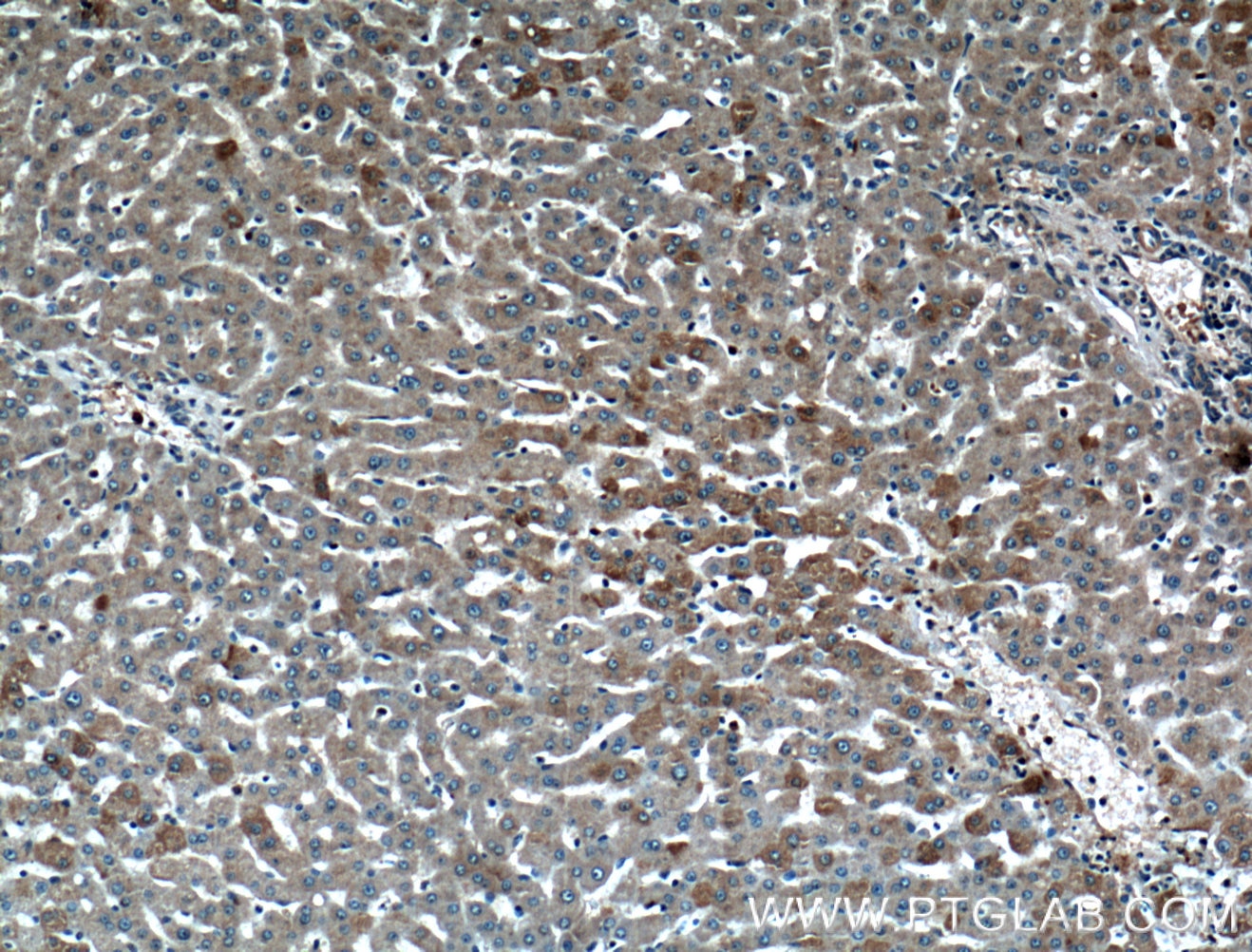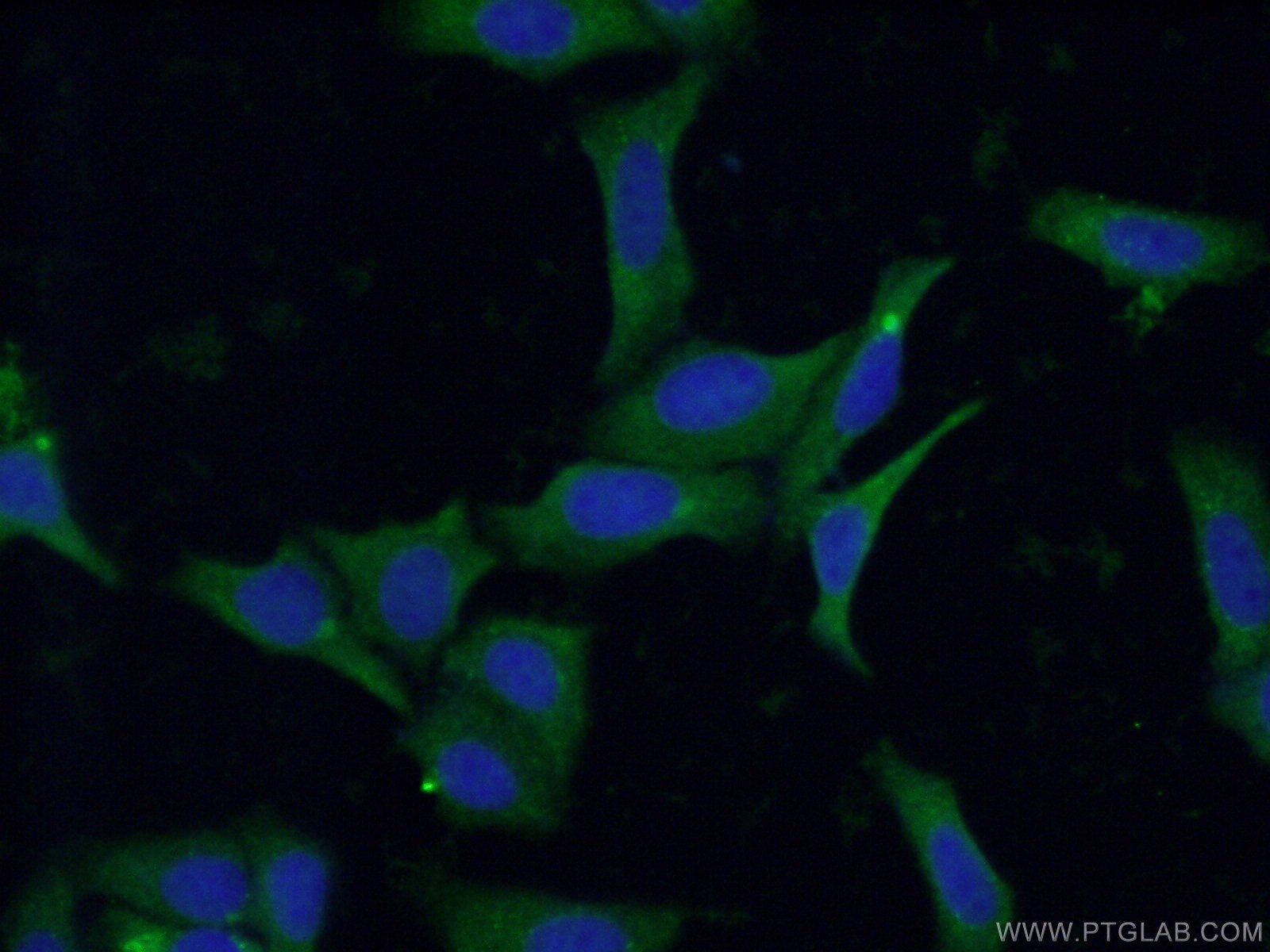- Phare
- Validé par KD/KO
Anticorps Polyclonal de lapin anti-STT3B
STT3B Polyclonal Antibody for WB, IF, IHC, ELISA
Hôte / Isotype
Lapin / IgG
Réactivité testée
Humain, rat, souris
Applications
WB, IHC, IF/ICC, IP, CoIP, ELISA
Conjugaison
Non conjugué
N° de cat : 15323-1-AP
Synonymes
Galerie de données de validation
Applications testées
| Résultats positifs en WB | tissu cérébral de rat, tissu cérébral humain, tissu hépatique de rat, tissu hépatique de souris |
| Résultats positifs en IHC | tissu hépatique humain, tissu cérébral humain il est suggéré de démasquer l'antigène avec un tampon de TE buffer pH 9.0; (*) À défaut, 'le démasquage de l'antigène peut être 'effectué avec un tampon citrate pH 6,0. |
| Résultats positifs en IF/ICC | cellules HepG2, |
Dilution recommandée
| Application | Dilution |
|---|---|
| Western Blot (WB) | WB : 1:500-1:3000 |
| Immunohistochimie (IHC) | IHC : 1:50-1:500 |
| Immunofluorescence (IF)/ICC | IF/ICC : 1:50-1:500 |
| It is recommended that this reagent should be titrated in each testing system to obtain optimal results. | |
| Sample-dependent, check data in validation data gallery | |
Applications publiées
| KD/KO | See 2 publications below |
| WB | See 16 publications below |
| IP | See 1 publications below |
| CoIP | See 1 publications below |
Informations sur le produit
15323-1-AP cible STT3B dans les applications de WB, IHC, IF/ICC, IP, CoIP, ELISA et montre une réactivité avec des échantillons Humain, rat, souris
| Réactivité | Humain, rat, souris |
| Réactivité citée | Humain, souris |
| Hôte / Isotype | Lapin / IgG |
| Clonalité | Polyclonal |
| Type | Anticorps |
| Immunogène | STT3B Protéine recombinante Ag2039 |
| Nom complet | STT3, subunit of the oligosaccharyltransferase complex, homolog B (S. cerevisiae) |
| Masse moléculaire calculée | 97 kDa |
| Poids moléculaire observé | 94 kDa |
| Numéro d’acquisition GenBank | BC015880 |
| Symbole du gène | STT3B |
| Identification du gène (NCBI) | 201595 |
| Conjugaison | Non conjugué |
| Forme | Liquide |
| Méthode de purification | Purification par affinité contre l'antigène |
| Tampon de stockage | PBS avec azoture de sodium à 0,02 % et glycérol à 50 % pH 7,3 |
| Conditions de stockage | Stocker à -20°C. Stable pendant un an après l'expédition. L'aliquotage n'est pas nécessaire pour le stockage à -20oC Les 20ul contiennent 0,1% de BSA. |
Informations générales
STT3B is a component of the N-oligosaccharyl transferase (OST) enzyme which catalyzes the transfer of a high mannose oligosaccharide from a lipid-linked oligosaccharide donor to an asparagine residue within an Asn-X-Ser/Thr consensus motif in nascent polypeptide chains. N-glycosylation occurs cotranslationally and the complex associates with the Sec61 complex at the channel-forming translocon complex that mediates protein translocation across the endoplasmic reticulum (ER). SST3B seems to be involved in complex substrate specificity
Protocole
| Product Specific Protocols | |
|---|---|
| WB protocol for STT3B antibody 15323-1-AP | Download protocol |
| IHC protocol for STT3B antibody 15323-1-AP | Download protocol |
| IF protocol for STT3B antibody 15323-1-AP | Download protocol |
| Standard Protocols | |
|---|---|
| Click here to view our Standard Protocols |
Publications
| Species | Application | Title |
|---|---|---|
Nat Chem Biol Oligosaccharyltransferase inhibition induces senescence in RTK-driven tumor cells. | ||
J Cachexia Sarcopenia Muscle Comparative proteomic analyses of Duchenne muscular dystrophy and Becker muscular dystrophy muscles: changes contributing to preserve muscle function in Becker muscular dystrophy patients. | ||
Mol Cell Proteomics Thyroglobulin Interactome Profiling Defines Altered Proteostasis Topology Associated With Thyroid Dyshormonogenesis | ||
MBio Dengue Virus Hijacks a Noncanonical Oxidoreductase Function of a Cellular Oligosaccharyltransferase Complex. | ||
EBioMedicine Targeting conserved N-glycosylation blocks SARS-CoV-2 variant infection in vitro. | ||
Cell Chem Biol Editing N-Glycan Site Occupancy with Small-Molecule Oligosaccharyltransferase Inhibitors.
|
